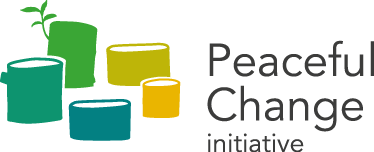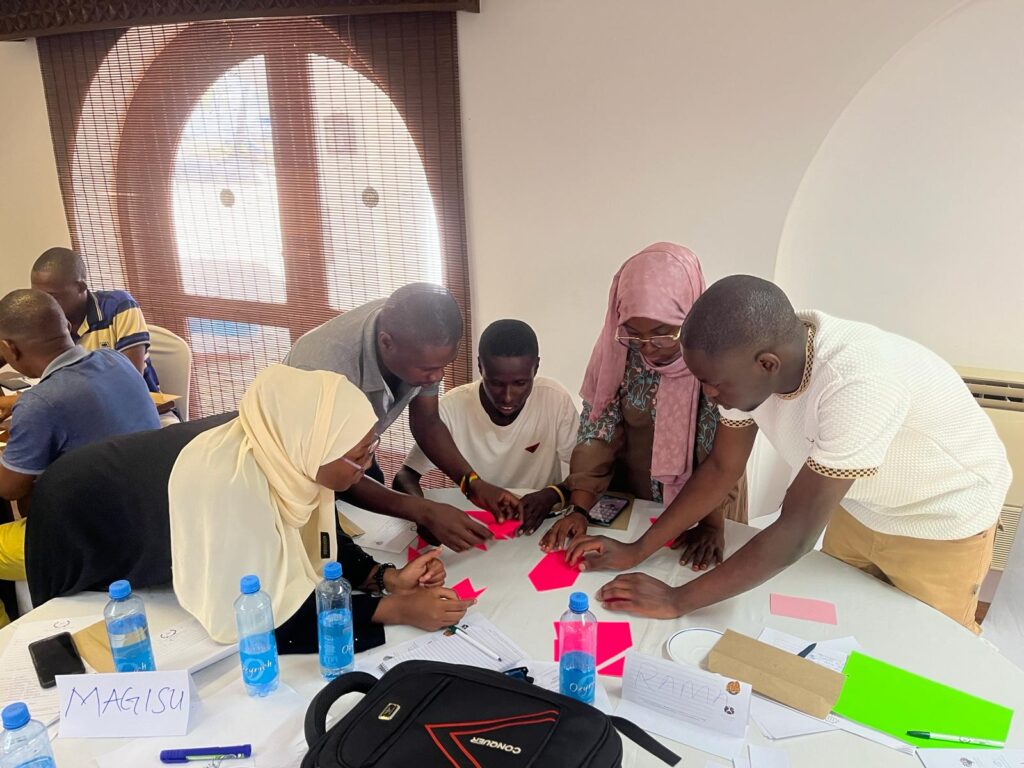What this tool does
This tool allows you take a due-diligence approach to decisions about whether to move ahead with a programme or activity where there is risk that it will do harm. The Conflict-Sensitive Due Diligence (CSDD) tool consists of four questions, or tests, which should be asked when undertaking any decision about assistance. If the decision passes each of these tests, then that decision is suitably conflict-sensitive. Conflict sensitivity harms may still occur as a result of the decision – though, conversely, new opportunities to contribute to peace can emerge. As a decision maker you have the responsibility to respond to these appropriately; however, in the meantime, you can act with confidence that you have done your due diligence.
When to use this tool
The CSDD tool can be applied to different kinds of decisions from deciding whether to greenlight a new programme, to designing a project, to implementing a specific activity. At any point that you are concerned about how to manage the risk of doing harm through your work, it can be helpful to work your way through the four CSDD tests. The amount of effort expended in working through the tests should be proportionate to the scale of the decision. You can run through the four tests during a project meeting, or engage in a more in-depth assessment if you are designing a new programme.
How to use this tool
Work your way systematically through the four tests set out below. You can do this in your head, as an agenda item in a team meeting, or as a more formalised assessment – depending on the scale and impact of the decision you have to make. Working through these tests (or checking your thinking) together with colleagues and stakeholders – even informally – can help strengthen the quality of your conflict-sensitive due diligence. It is important to consider who is around the table during these discussions. The greater the context expertise and the diversity of experience and perspective, the more robust the outcome is likely to be. You can use PCi’s CSDD Worksheet to record your answers and considerations.
You might also find our podcast episode on the CSDD tool helpful.
The four tests
Test 1 – The objectives test: Are the objectives of the activity relevant, timely and appropriate within the peace and conflict environment?
The first test assesses whether the intention of the action is relevant, timely and appropriate to the peace and conflict context. You should consider whether the assistance responds to a genuine need in this moment. Assistance activities that may have responded to a genuine need at the start of a project may become less relevant due to a shift in peace and conflict dynamics. Asking and answering these questions can be challenging, especially when contracts, delivery targets and workplans, and institutional pressures push against it. However, activities that are not relevant, timely or appropriate risk, at best, wasting resources that could be used for other assistance activities and, worse, exacerbating conflict dynamics.
Things to consider could include:
- What is the objective of the activity, action or decision?
- Is the objective relevant in the peace and conflict context? How do you know?
- Does the activity address a genuine need?
- Is the expected result from the activity likely to be sustainable given likely changes in the peace and conflict context?
- If the peace and conflict context has shifted recently, does the need which the activity addresses still exist?
- Is the objective compatible with other activities underway or proposed, including by other donors or implementers?
- Is the objective timely?
- Is it feasible to work toward this objective in the current peace and conflict context, or is it necessary to work on other things first?
- Are there other needs that would be a higher priority than the one this activity is trying to address, such as urgent humanitarian needs, conflict prevention or conflict reduction?
- Will beneficiaries and other stakeholders see the objective of the activity as a pressing one at the current time?
- Is the objective appropriate? Are there any considerations or concerns about what you are trying to achieve?
- Does the activity unfairly benefit one group over others?
- Does the activity aim to provide support to actors who are involved in conflict-promoting behaviour?
- Does the activity aim to provide support to actors who have engaged in concerning behaviour relating to human rights?
Test 2 – The harm-minimisation test: Have all reasonable measures been undertaken to identify and reduce the ways in which the activity could cause harm?
The second test asks you to identify potential conflict-sensitivity harms that may be caused by the activity and to adapt the activity to mitigate those harms. It also asks whether you have planned appropriate responses should the harms occur anyway.
You can use PCi’s Conflict Sensitivity Interactions Typology and Conflict Sensitivity Matrix tools to help you identify potential harms.
Things to consider could include:
- What types of harms could occur as a result of these activities?
- What peace and conflict factors could be worsened?
- Have you identified mitigations for these risks and incorporated them into your activity where possible?
- Have you identified and planned for appropriate responses if these risks do occur?
- How will you know if these risks have occurred?
Test 3 – The benefit-maximisation test: Have all reasonable measures been undertaken to identify and leverage opportunities to contribute to peace through the activity?
The third test is the mirror of the second test, looking at ways in which the activity could contribute to peace. It is important not to ignore or deprioritise thinking about how an activity can contribute to building or sustaining peace.
Things to consider could include:
- What peace and conflict factors will the activity affect?
- Can you adjust the activity so that it has a greater impact on these factors in a positive way? How?
- What relationships between stakeholders might the activity affect? Can you change the ways you deliver the activity to maximise the positive impact on that relationship? How?
- Is there a way you could increase the cost of engaging in conflict through your activities? How?
- Is there a way you can use your activity to strengthen political peace processes? How?
Test 4 – The proportionality test: Are the harms identified in test 2 proportionate to the benefits identified in tests 1 and 3?
The final test aims to find the balance between the potential harms identified in test 2 with the benefits of the activity identified in tests 1 and 3. This test recognises that activities may cause harms no matter what mitigations are put in place. There may also be no alternative course of action that could be harm-free. However, this test asserts that in such circumstances, activities may still be conflict-sensitive so long as those harms are proportional to the benefits.
Implementation of the test requires a sense of how to balance benefits and harms. In practice, different institutions or decision makers may develop their own sense of where the balance lies relevant to their own activities. The point of the test is, ultimately, that you think about the balance of harms and benefits explicitly and that you can justify, to yourself or on record, the reasons why a decision may be made.
Things to consider could include:
- Do the benefits identified in tests 1 and 3 outweigh the risk of harms identified in test 2? Why?
- Is there another way to achieve the same objective that would be less harmful?
- What would be the cost of not doing the action?
What happens if you cannot pass the tests
There may be times – though, hopefully, rare – where the conclusion of the CSDD tool is that a project’s benefits do not outweigh the potential harms. This is a good outcome, in that the tool has made explicit the conflict sensitivity concerns relating to the activity. In practice, however, some colleagues and other stakeholders may dispute such concerns. By using the CSDD tool, particularly when responses to each test are written down in a report or note, those stakeholders have to engage with the conflict sensitivity considerations raised. It requires them to respond to the concerns, to take them seriously, and either explicitly declare that they disagree or, more likely, to make adaptations to activities in order to try to address them. Even if these responses do not fully address the conflict sensitivity concerns raised through the CSDD, the process does lead to an improvement in the conflict sensitivity of the activity.
The conflict sensitive due diligence tool is also available to download in PDF format on the following link:
The conflict sensitive due diligence worksheet is available to download in PDF format on the following link:



